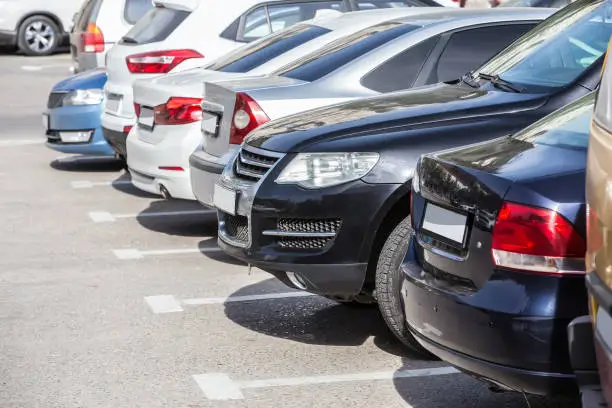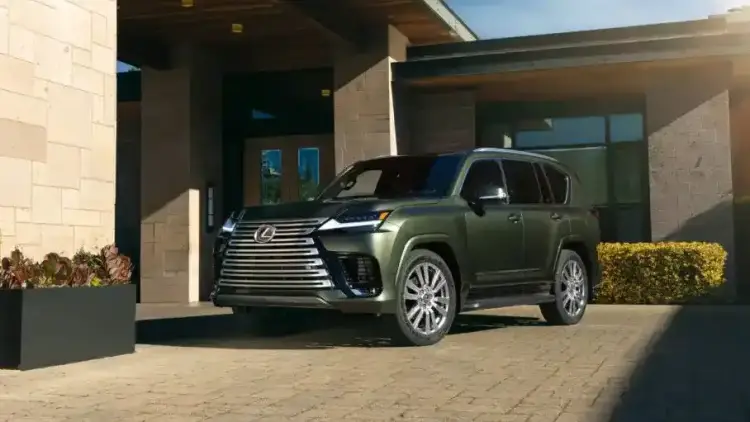- What Exactly Is a Car Sequence Number
- How to Find Your Car Sequence Number
- Why the Car Sequence Number Matters
- How to Use a Car Sequence Number
- FAQs
Ever wondered about the secret code etched into every car? It's more than just numbers and letters—it's your car's true identity. Let's uncover the mystery of the car sequence number and why it's so important for every driver.
What Exactly Is a Car Sequence Number
Imagine your car having its own unique fingerprint. That's essentially what a car sequence number is. It's a very special set of characters given to every single vehicle. Most people know it better as a vehicle identification number (VIN), or sometimes simply a VIN number. You might also hear it called a car VIN or even a serial number for a vehicle. All these terms point to the same thing:this unique code helps identify one car from millions of others. It's absolutely central to vehicle identification, ensuring every car can be tracked and recognized throughout its life on the road.
Key Points on Car Sequence Number Meaning
Let's break down what this important number truly means for you as a car owner or someone looking to buy a vehicle.
Its Definition:At its heart, the car sequence number is a one-of-a-kind code that is given to every single car during its manufacturing process. Think of it like a permanent "ID card" or a digital birth certificate for your vehicle. No two cars in the world, built within a 30-year period, will have the exact same vehicle identification number (VIN). This makes it a powerful tool for clear vehicle identification.
Common Names You'll Hear:While "car sequence number" explains its purpose well, you'll most often hear this code referred to as its more official title:the Vehicle Identification Number (VIN). People also commonly say VIN number or simply car VIN. Sometimes, especially for older vehicles or general parts, it might be called a serial number. It's helpful to remember that all these phrases typically refer to the same critical identifier.
Why It Exists and Why It's Used:Car manufacturers assign this VIN number from the very beginning of a car's journey down the assembly line. This helps them track each specific vehicle through its entire life. From production records and factory recalls to ownership history and accident reports, the car sequence number is the thread that connects all this information. It ensures transparency and accountability for every car ever made.
Here's a quick look at what the number includes:
Part of VIN | What It Shows | Simple Explanation |
|---|---|---|
First 3 digits | Maker info | Where the car came from |
Middle section | Car model details | Stuff like the engine and model |
Last part | Unique numbers | Individual codes for that car |
How to Find Your Car Sequence Number
Don't worry, locating your car sequence number is usually a quick and straightforward task. You don't need any special tools or technical skills. It's designed to be easily accessible. Knowing where to find VIN locations can save you time, especially when you need to perform a quick VIN lookup or share details about your car. Let's explore the most common places where you can spot this important VIN number on your vehicle.
Top Places to Spot It
On the Dashboard (Driver's Side):This is probably the most common spot, and it's quite visible. Just stand outside your car on the driver's side and look through the front windshield, near the dashboard. You'll see a small plate or sticker with the vehicle identification number (VIN) clearly printed on it. This placement makes it very easy for officials or potential buyers to perform a quick VIN lookup without even entering the car.
On the Driver's Door Frame (or Door Jamb):Open the driver's side door all the way. Look at the door frame, sometimes called the 'door jamb', where the door latches closed. You'll often find a sticker with various car details, and the car VIN will be prominently displayed there. This sticker might also include tire pressure recommendations and other important manufacturing information.
On Official Documents:Your car sequence number is always recorded on important paperwork related to your vehicle. Some key documents where you can reliably find VIN information include:
Your car's registration certificate.
The vehicle's title deed.
Your car insurance policy documents.
Repair orders or service records from garages. These papers are essential for understanding your car's vehicle history and proving ownership.
Under the Hood (Engine Bay):While less common on modern cars, some older models or specific vehicle types might have the VIN number stamped on a metal part within the engine bay. Look for a small metal plate or a stamped area on the firewall, near the engine block. This spot acts as a permanent record, resisting wear and tear.
On the Vehicle's Chassis or Frame:In some cases, especially on trucks or very old cars, the serial number (or VIN) might be stamped directly onto the vehicle's frame or chassis. This is a more permanent marking, though it can be harder to find without lifting the vehicle.
Why the Car Sequence Number Matters
Understanding your car sequence number isn't just about knowing a definition; it's about protecting your interests as a car owner. This unique code is the backbone of all vehicle history records and forms the core of modern car identification systems. Without it, many everyday tasks related to your vehicle become complicated, risky, or even impossible. So, why should you really care about this seemingly simple number? Its importance touches on safety, finance, and legal matters.
Uses in Daily Life
The car sequence number serves numerous practical uses that affect almost every aspect of car ownership. Here’s how it plays a crucial role in your daily life:
When Buying or Selling a Car:This is one of the most critical uses. Before you buy a used car, getting its vehicle history report using the VIN number is highly recommended. This report can reveal past accidents, flood damage, salvage titles, odometer tampering, and previous ownership. It helps you decode VIN details and ensures you know exactly what you're buying. Similarly, when selling, a clear vehicle history helps build trust with potential buyers. It’s your guarantee of transparency.
For Insurance Claims and Policies:Insurance companies rely heavily on the vehicle identification number (VIN) to identify your specific car. When you get a new insurance policy or file a claim after an accident, the VIN number ensures that the correct vehicle details (make, model, year, features) are used. This prevents confusion and speeds up the entire claim process, making sure you get the right coverage or payout.
For Recalls and Maintenance:Automakers use the car VIN to directly inform owners about safety recalls or specific service bulletins for their model. If there's a problem with a part that affects a certain batch of cars, your VIN number is how they know your car is part of that group. This helps keep you safe and your car in top condition.
In Legal and Law Enforcement Situations:The VIN number is invaluable for police and authorities. If your car is stolen, the vehicle identification number (VIN) is immediately entered into national and international databases. This unique serial number helps law enforcement agencies track and recover stolen vehicles. It's also used in traffic stops or accidents to quickly pull up vehicle registration and ownership information. It serves as irrefutable proof of your car's true identity.
How to Use a Car Sequence Number
Beyond just knowing what it is, learning how to use your car sequence number can give you powerful insights into your vehicle. You can actually decode VIN details to unlock a wealth of information about its past and specifications. This process is like uncovering your car's entire story, often for free, through simple online tools. It’s a great way to verify information or learn more about your ride.
Steps for Basic VIN Lookup
Performing a simple VIN lookup is easier than you might think. Follow these straightforward steps to access basic information about any vehicle.
Get the Entire Number Accurately:The first and most crucial step is to write down the complete car sequence number. This is a combination of 17 letters and numbers (no 'I', 'O', or 'Q' to avoid confusion with '1' or '0'). Double-check your transcription to make sure every character is correct. Even one wrong character can lead to incorrect or no results when you try to decode VIN information. Finding your VIN number on the dashboard or door frame makes this step easy.
Find a Reputable Free Online Service:There are many websites that offer free VIN lookup services. A quick search for "free VIN check" or "VIN decoder online" will show you several options. These free sites typically provide basic manufacturing details and sometimes limited vehicle history data. Always choose a well-known or government-affiliated site if available for the most reliable results.
Enter the VIN and See What Information It Reveals:Paste or type your carefully noted vehicle identification number (VIN) into the search box on the chosen website. Hit 'enter' or 'decode'. The results can tell you a lot just from the standard VIN number itself. You might see:
The original manufacturer (e.g., ToyotaBahrain ToyotaEgypt ToyotaKSA ToyotaKuwait ToyotaOman ToyotaQatar ToyotaUAE Toyota, FordUAE FordKSA FordBahrain FordEgypt FordKuwait FordOman FordQatar Ford).
The country of origin.
The vehicle's make, model, and year of manufacture.
Basic engine size and type.
Sometimes, specific plant locations where the car was assembled.
While these free services are excellent for quick checks and basic car identification, remember that more in-depth reports, like detailed accident histories or comprehensive ownership records, usually come from paid services. However, for a general overview or to confirm basic vehicle specifics, the free options are incredibly useful and simple to use.
FAQs
Frequently Asked Questions About Car Sequence Numbers
Q:What is a car sequence number used for?
A:A car sequence number is primarily used to uniquely identify every vehicle on the road. It's like a car's fingerprint. This makes it essential for many reasons. For example, it helps you perform a VIN lookup to check a car's past before buying it. It’s also vital for processing insurance claims, tracking stolen vehicles, and understanding your vehicle's full vehicle history. Essentially, it's the key to car identification for various official and everyday purposes.
Q:Where do I find the number on my car?
A:The easiest places to find VIN information are usually on the driver's side. Look on the dashboard, visible through the front windshield, or on the sticker located on the driver's side door frame when the door is open. It’s also always listed on your official vehicle documents, such as your registration papers or insurance policy. Many people can spot their car VIN in under a minute simply by checking these common spots.
Q:Can someone steal my car with this number?
A:No, simply knowing your car sequence number (or VIN number) does not give someone the ability to steal your car. The VIN number is a public identifier, and it reveals only information about the vehicle, not its physical location or how to start it. It’s like knowing someone’s ID number but not where they live or how to get into their house. While it’s always wise to be careful with personal information, the VIN number itself is purely for vehicle identification and record-keeping, not for security access. However, keep your personal documents safe to prevent misuse for fraudulent activities.
Read More:
How to Open Your 2023 Tiguan Trunk from the Inside:An Escape Guide
Where Is the Volkswagen Tiguan Made? Your Global Factory Guide
Unpacking the Volkswagen Tiguan:Your Guide to a Top Compact SUV













